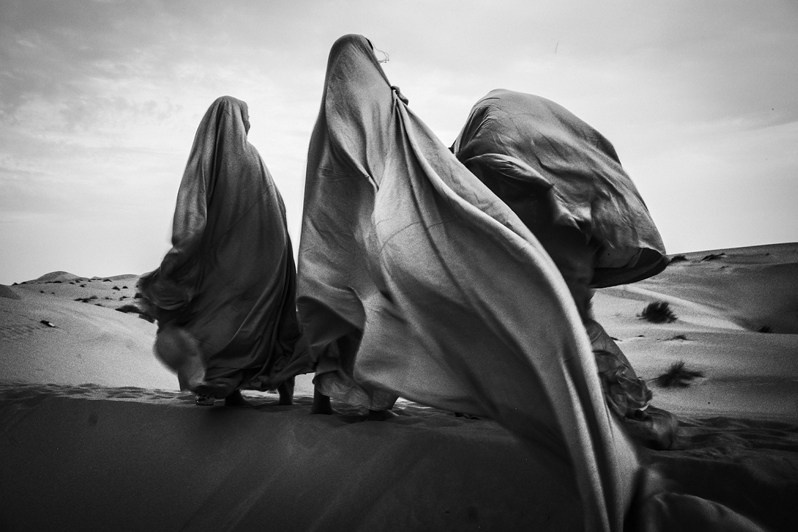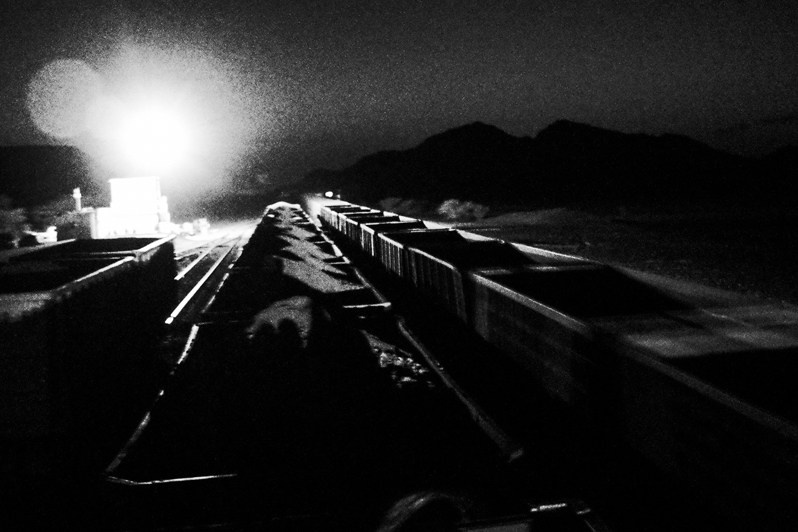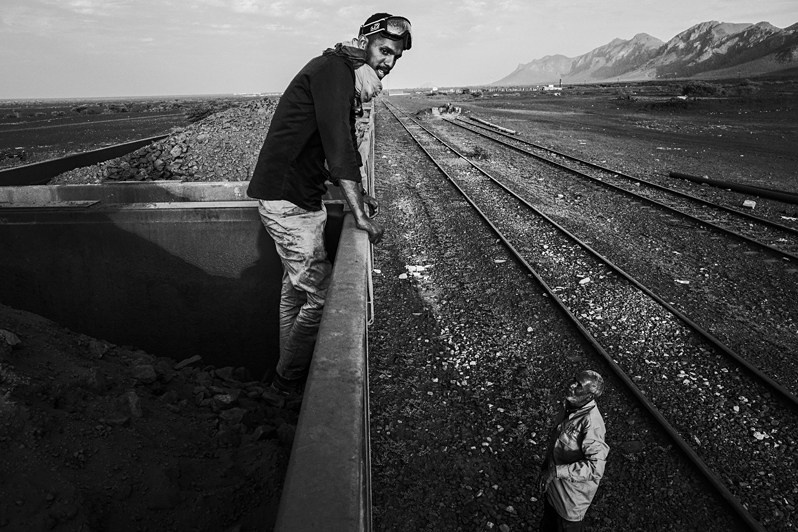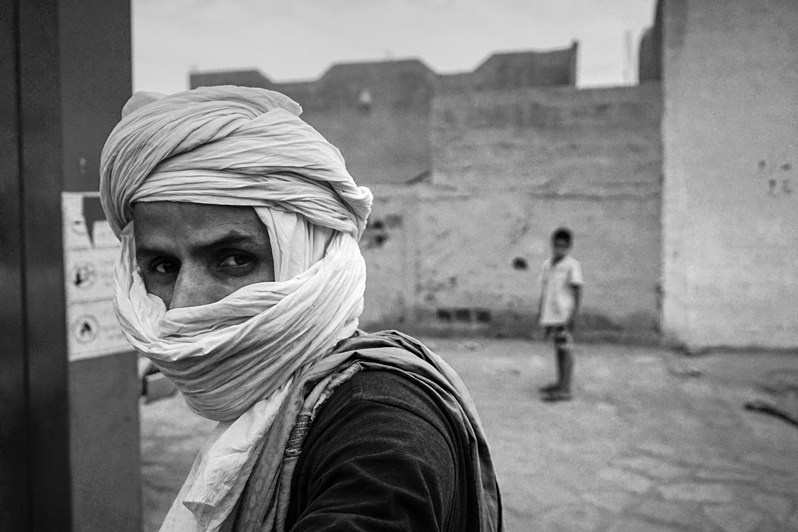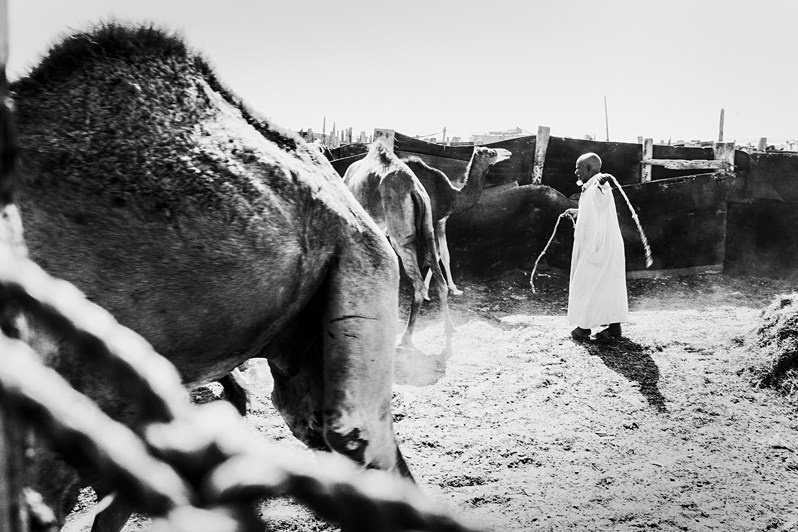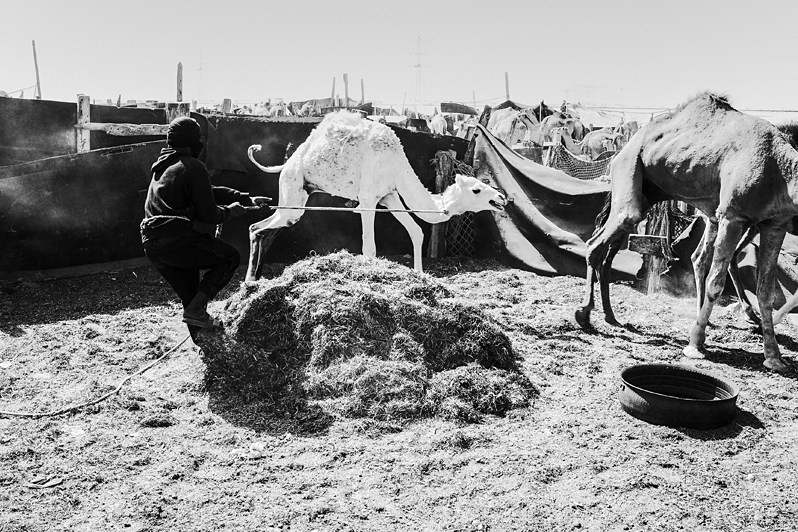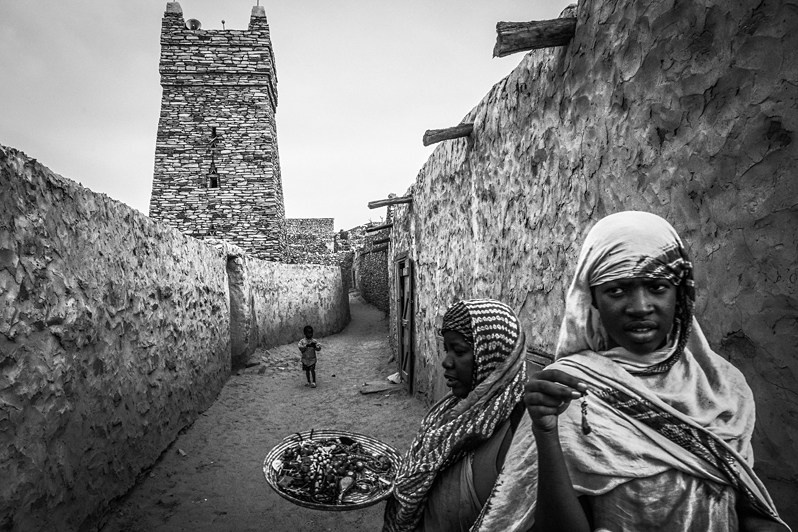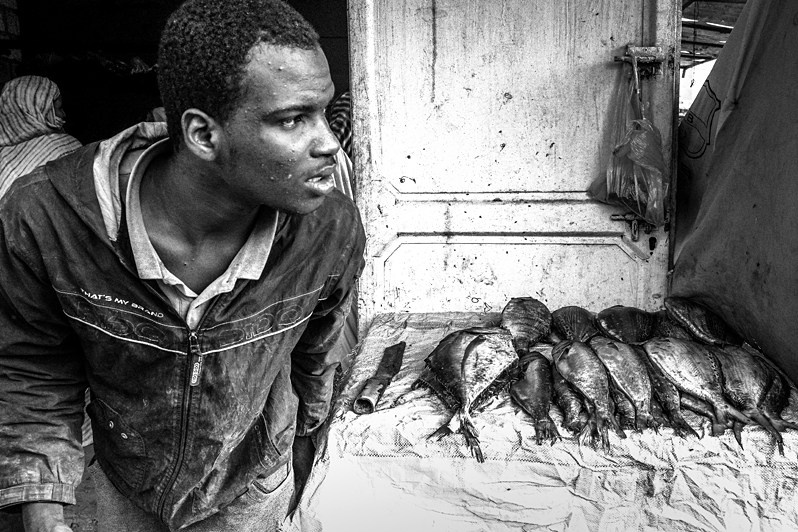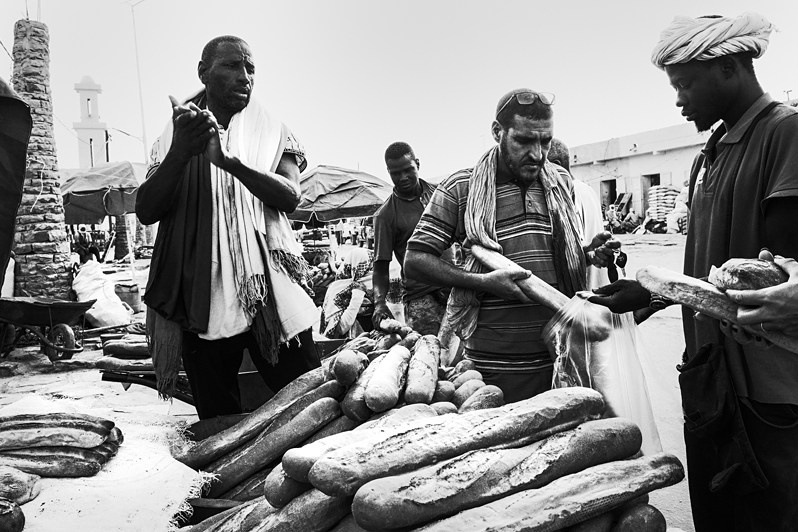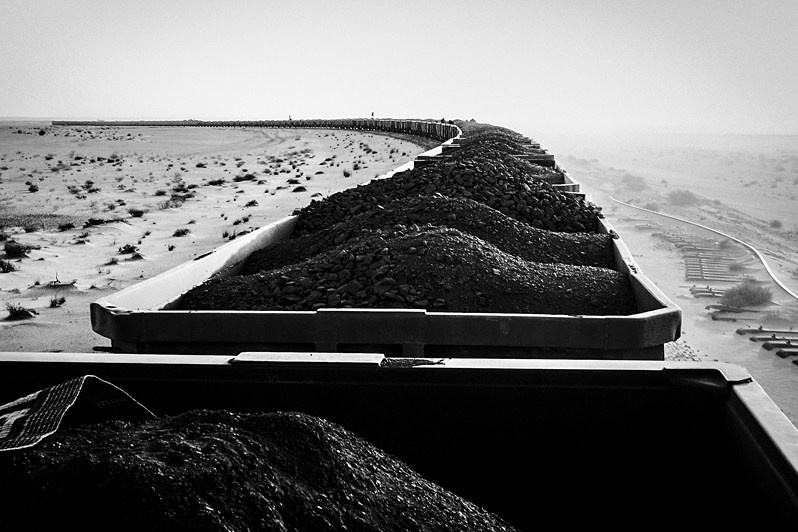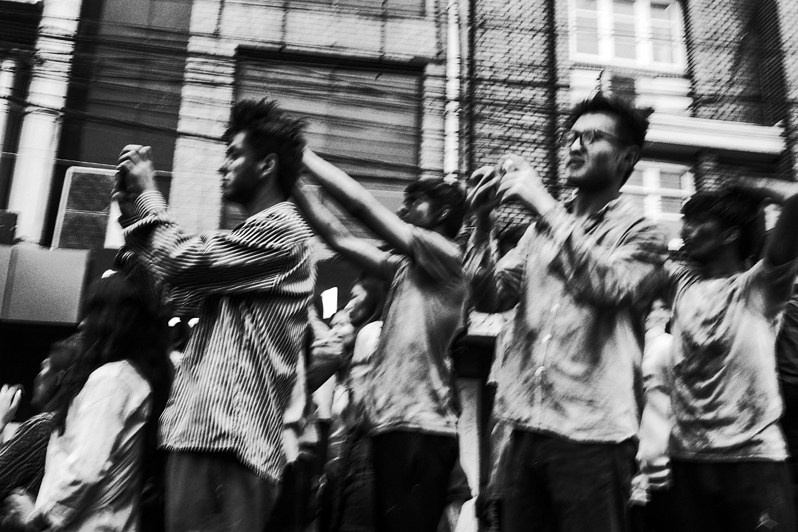Train through the Sahara
Nadezhda Khramova
Schoolgirls return homeafter school through the desert
near Chinguetti, Adrar region, Mauritania. 2024
The African continent has beckoned me since my childhood: freedom-loving animals grazing serenely in the foothills of Kilimanjaro; tanned, bright and mysterious people; a fairy-tale world of scorching sun. After Exupery’s novels I wanted to find his plane in the endless sands of the Sahara, to meet that very Fox, to drink water in an oasis and hug a baobab tree.
Forty years later my train is travelling through the Sahara. Exploring the sandy part of the continent has taken several years. Taking a bite of this layer cake from different sides. Each corner deserves a separate deep dive. Different nationalities, cultures, countries, different standards of living — but there is something elusive that unites them in a circle of sand.
Coupling of freight and passenger train carriages in the mining town of Zouérat
Tiris Zemmour region, Mauritania. 2024
NIGHT
You lie down on the ore and a myriad of stars float before your eyes. A light wind puts a fine suspension of black powder from the infernal train. It is not Transsib, not Moscow-Vladivostok, but it also crosses the whole country, only without stops.
We took the seventh carriage, and it seems to be the right decision. The locomotive ahead is puffing and rumbling, so it’s not very pleasant to be behind it. A dark figure jumps onto a neighbouring carriage and hides in a pile of ore. Elhadj is a skinny kid who helps me with logistics. He dreamed of becoming a pilot, but there are only two aeroplanes in Mauritania… So he is taking the ore train for the hundred and twenty-first time.
At 19:10 the journey full of mystery began, anticipating our unusual experience. The starry sky is black and the road is dark. All around is a desert without life. No settlements, no stations. Only our train is rushing north-west, towards the sea.
It turned out to be uncomfortable to sleep on the ore. The only comfortable position was sitting up, waiting for the dawn.
The sun was slowly creeping up on the horizon from behind the Table Mountain. Its white, like a trimmed pancake, stared miserably at the desert. The train was rushing along the only tracks, covering the surroundings with a whitish cloud of ore. Six “caterpillars” of my fellow travellers burrowed in the corners of our carriage, hiding with their heads in their sleeping bags.
As the sky rose, the air began to warm up, and by the end of the sixteen-hour journey it finally became comfortable. The final destination was Port City. It is ten kilometres of rubbish along the tracks; beyond the rubbish barrier are the poorest shacks. On top of the rubbish, black children play: some wave at us, some throw stones. A wild, beggarly world.
Tuareg at a petrol station
near Nouakchott, Mauritania. 2024
PORT CITY
The camel market is full of pitiful cries and heavy stench. Large pens with long-legged, beautiful animals. Every day a huge number of them are sold, bought, slaughtered. But now, under the scorching sun, nothing is happening here. After going round all the lines with dens, on the way out I came across the capture of a camel I had bought. The most beautiful snow-white female camel was caught and tried to subdue, which, of course, she stubbornly resisted, hiding behind her sandy relatives. She barked like a stubborn horse, shouted and growled. So that she would not be so lonely, her brother in distress was also caught. The two of them were briskly chased out of the gate, into the slum dales.
There is hardly any place other than the market where one can better understand the country through the multifaceted life in everyday life. Even a short time spent here shows how indifferent the locals are to the beauty and cleanliness around them. They live by hard labour, earning their daily subsistence, reconciling themselves with the surrounding reality. They are different — cheerful and angry, friendly and aggressive, smiling and gloomy.
The fish port is traditionally smelly and dirty, but it is bustling with life. Shabby boats scurry back and forth. People look suspiciously: some hide, some, on the contrary, try to socialise. After a few minutes, the police came and demanded that all the pictures be deleted. But we already know how to deal with that.
I was taken into a dark room with a small smoked window. There was a cot in the middle, and a couple of tables on either side of it. On the cot, on his side, lay the chief of police, a grey-haired old man. His potbelly eloquently testified to his status better than his epaulettes. He wore gold-rimmed glasses on his nose. His green flight jacket set off his chocolate skin. The chief spoke Arabic and asked why we were filming and where we were from. Russia seems to be brothers, but we still can’t film, and we have to delete everything. He said he could only watch, but now it was better to leave altogether. The others danced around him and nodded in agreement. It was at times like this that you wished you had a spy camera and had the nerve to ask if you could film him.
Villagers bring their handicrafts to sell in the narrow streets of the old town
Chinguetti, Adrar region, Mauritania. 2024
SCHOOLGIRLS
Sky-blue figures flashed across the yellow dunes. Schoolgirls, wrapped head to toe in a piece of cloth, walk across the sands to school. The modest ones hide their faces, the more daring ones come to practise their English, and everyone enjoys sweets.
The girls have no chance of getting out of this wilderness, unless their parents suddenly move to the city. That’s how the sand people have lived for centuries. By cart to school or on foot, and after school you can roll a tyre across the dunes.
The keeper of the village’s history proudly shows a large basin and tongs. Girls must drink three basins of camel’s milk every day; if she refuses, she will be pinched with tongs until she drinks. A full girl will be able to give birth to a healthy child, which means her parents will be able to marry her off. It’s a good way for village girls to make a life for themselves. But now, when they see a pale-faced man, the whole village flocks to the alley and carries whatever they have in their pockets, hoping to sell their handicrafts for a dollar and feed themselves for another day.
Fishmonger in the oasis
Terjit oasis village, Atar district, Adrar region, Mauritania. 2024
CITY IN THE SAND
The nearest market is two hundred kilometres from the village. The market is run by divorced women; despite being Muslims, they are highly respected here. They mostly sell furniture and utensils. The men are engaged in foodstuffs. There is freshly caught Saharan fish, meat, and, of course, dates.
The date is the main product of the desert, and the palm tree is the national birch. But what’s most surprising is how baguette has taken root all over North Africa. It is carried in sacks, on bicycles and carts. Baguette everywhere. The cult of baguette.
210 wagons carrying iron ore in the world’s longest freight and passenger train
Railway on the border with Western Sahara, Mauritania. 2024
A wild desert land with a unique atmosphere and aesthetics. An amazing harmonious interweaving of rich history, authentic colour mixed with religiosity and wild nature. There are no wide avenues or expensive neighbourhoods here, people live more than simply. And it is the local population with its way of life that is the main attraction. The quiet world of the desert and minimalism hidden in the beauty of the most ancient culture.
Nadezhda Khramova 2025

